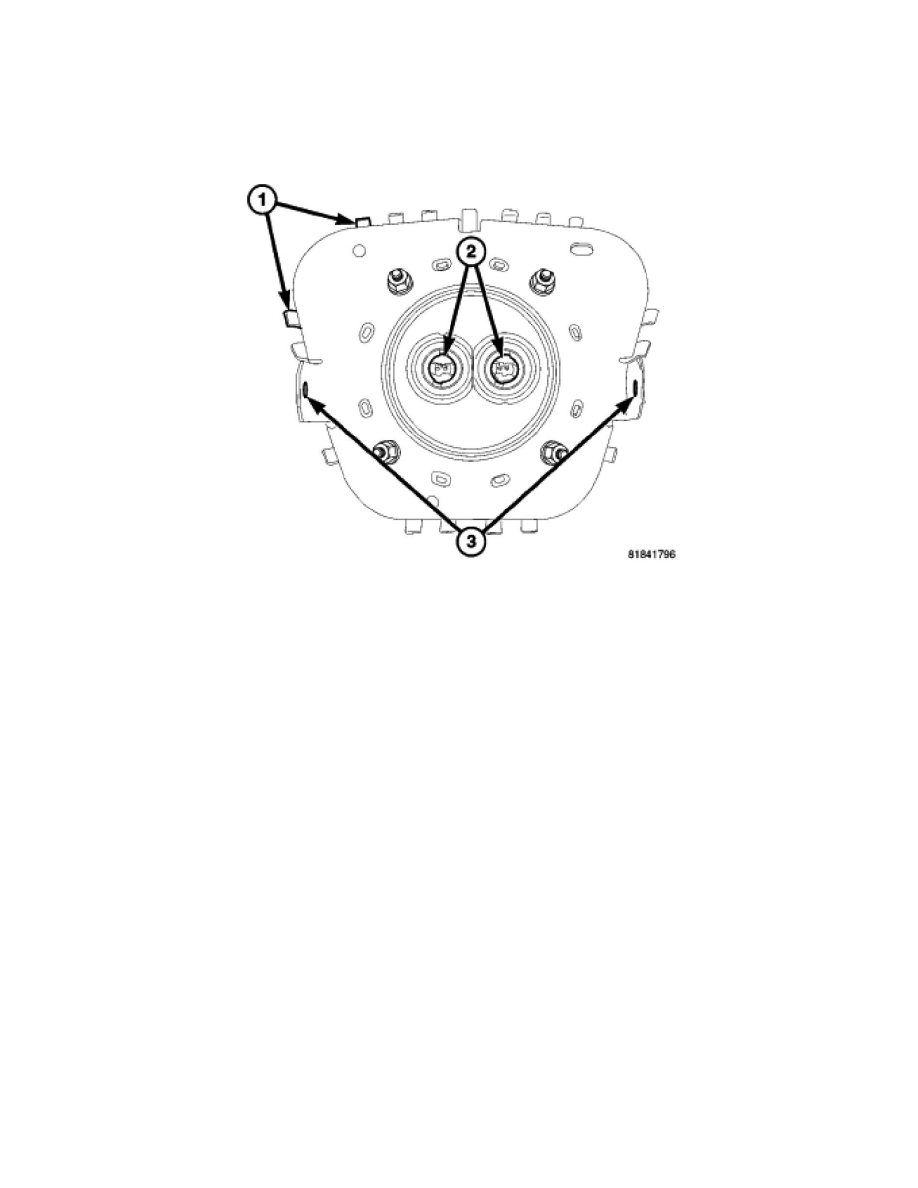Sebring Sedan L4-2.4L (2007)

Air Bag: Description and Operation
Driver Airbag
Description
DESCRIPTION
The driver airbag protective trim cover is the most visible part of the driver airbag system. The driver airbag trim cover is held in place by a latch and
hook system (1). The driver airbag is mounted directly to the steering wheel by two bolts on either side of the airbag (3). Located under the airbag cover
are the folded airbag cushion, the igniter and two squib connectors (2), the inflator, and the airbag cushion supporting components. The driver airbag is a
multistage-type that is designed to deploy with less force than those used in some prior models. A radial deploying fabric airbag cushion with internal
tethers is used. The airbag inflator is a dual-initiator, non-azide, pyrotechnic-type unit. Two keyed and color-coded connector receptacles on the driver
airbag inflator connect the two inflator initiators to the vehicle electrical system through two yellow-jacketed, two-wire pigtail harnesses of the
clockspring.
The driver airbag cannot be repaired, and must be replaced if deployed or in any way damaged. The driver airbag trim cover may be disassembled from
the driver airbag unit, and is available for individual service replacement.
Operation
OPERATION
The multistage driver airbag is deployed by electrical signals generated by the Occupant Restraint Controller (ORC) through the driver airbag squib 1
and squib 2 circuits to the two initiators in the airbag inflator. By using two initiators, the airbag can be deployed at multiple levels of force. The force
level is controlled by the ORC to suit the monitored impact conditions by providing one of four delay intervals between the electrical signals provided to
the two initiators. The longer the delay between these signals, the less forcefully the airbag will deploy.
When the ORC sends the proper electrical signals to each initiator, the electrical energy generates enough heat to initiate a small pyrotechnic charge
which, in turn ignites chemical pellets within the inflator. Once ignited, these chemical pellets burn rapidly and produce a large quantity of inert gas. The
inflator is sealed to the back of the airbag housing and a diffuser in the inflator directs all of the inert gas into the airbag cushion, causing the cushion to
inflate. As the cushion inflates, the driver airbag trim cover will split at predetermined breakout lines, then fold back out of the way along with the horn
switch and tray unit. Following an airbag deployment, the airbag cushion quickly deflates by venting the inert gas towards the instrument panel through
vent holes within the fabric used to construct the back (steering wheel side) panel of the airbag cushion.
Some of the chemicals used to create the inert gas may be considered hazardous while in their solid state before they are burned, but they are securely
sealed within the airbag inflator. Typically, both initiators are used and all potentially hazardous chemicals are burned during an airbag deployment
event.
The inert gas that is produced when the chemicals are burned is harmless. However, a small amount of residue from the burned chemicals may cause
some temporary discomfort if it contacts the skin, eyes, or breathing passages. If skin or eye irritation is noted, rinse the affected area with plenty of cool,
clean water. If breathing passages are irritated, move to another area where there is plenty of clean, fresh air to breath. If the irritation is not alleviated by
